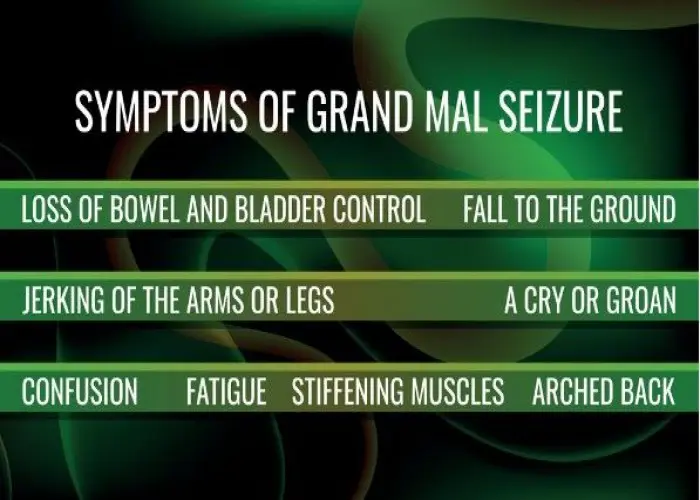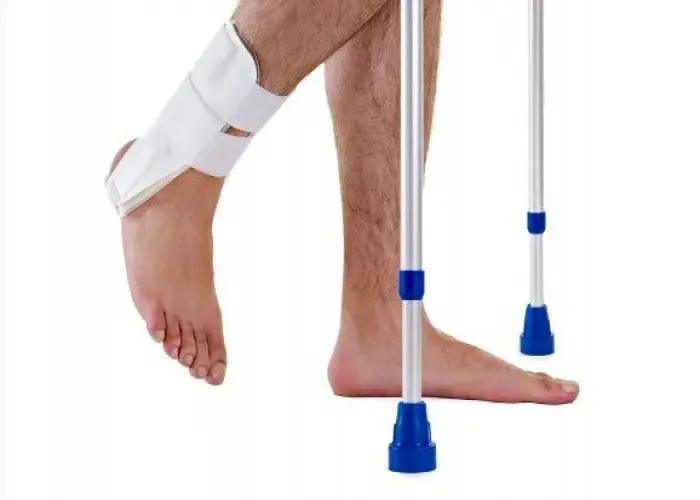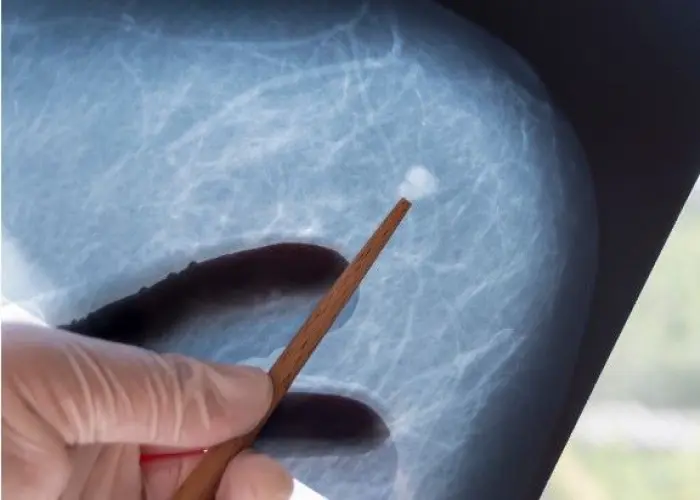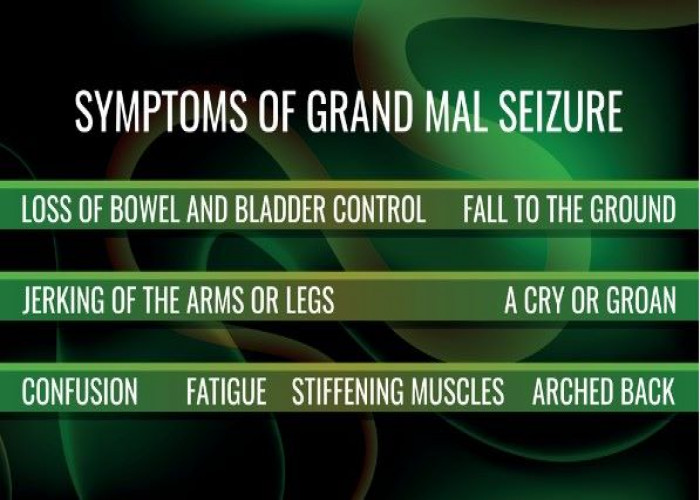 Welcome
Welcome
“May all be happy, may all be healed, may all be at peace and may no one ever suffer."
Grand mal seizure

A grand mal seizure, also known as a generalized tonic-clonic seizure, is a type of seizure that affects the whole brain and can cause a loss of consciousness and convulsions. It is the most common type of seizure and can be caused by a variety of factors, including epilepsy, head injuries, brain infections, and drug or alcohol withdrawal.
Symptoms of a grand mal seizure can include loss of consciousness, convulsions, muscle rigidity, jerking movements, tongue biting, and incontinence. The seizure may last several minutes, and the person may feel confused or disoriented afterward.
Diagnosis of a grand mal seizure usually involves a physical exam, medical history, and neurological testing. Imaging tests, such as an electroencephalogram (EEG) or magnetic resonance imaging (MRI), may also be used to check for underlying brain conditions.
Treatment for a grand mal seizure typically involves managing symptoms during the seizure and addressing any underlying conditions. Medications, such as anti-epileptic drugs, may be prescribed to prevent or manage future seizures. Lifestyle changes, such as getting enough sleep and avoiding triggers, such as stress or alcohol, may also be recommended to help manage seizures.
If you witness someone having a grand mal seizure, it is important to stay calm and keep them safe until the seizure ends. You can help by removing any nearby objects that may cause injury, cushioning their head, and rolling them onto their side to prevent choking. After the seizure, it is important to seek medical attention to determine the cause of the seizure and develop an appropriate treatment plan.
Research Papers
Disease Signs and Symptoms
- Seizures
- Confusion (Hallucinations)
- Headaches
- Fever
Disease Causes
Grand mal seizure
Grand mal seizures occur when the electrical activity over the whole surface of the brain becomes abnormally synchronized. The brain's nerve cells normally communicate with each other by sending electrical and chemical signals across the synapses that connect the cells.
In people who have seizures, the brain's usual electrical activity is altered and many nerve cells fire at the same time. Exactly what causes the changes to occur often remains unknown.
However, grand mal seizures are sometimes caused by underlying health problems, such as:
Injury or infection
- Traumatic head injuries
- Infections, such as encephalitis or meningitis, or a history of such infections
- Injury due to a previous lack of oxygen
- Stroke
Congenital or developmental abnormalities
- Blood vessel malformations in the brain
- Genetic syndromes
- Brain tumors
Metabolic disturbances
- Very low blood levels of glucose, sodium, calcium or magnesium
Withdrawal syndromes
- Using or withdrawing from drugs, including alcohol
Disease Prevents
Disease Treatments
Not everyone who has one seizure has another one. Because a seizure can be an isolated incident, your doctor may not start treatment until you've had more than one. Treatment usually involves the use of anti-seizure medications.
Medications
Many medications are used in the treatment of epilepsy and seizures, including:
- Carbamazepine (Carbatrol, Tegretol, others)
- Phenytoin (Dilantin, Phenytek)
- Valproic acid (Depakene)
- Oxcarbazepine (Oxtellar, Trileptal)
- Lamotrigine (Lamictal)
- Gabapentin (Gralise, Neurontin)
- Topiramate (Topamax)
- Phenobarbital
- Zonisamide (Zonegran)
Finding the right medication and dosage can be challenging. Your doctor likely will first prescribe a single drug at a relatively low dosage, and then increase the dosage gradually until your seizures are well-controlled.
Many people with epilepsy are able to prevent seizures with just one drug, but others need more than one. If you've tried two or more single-drug regimens without success, your doctor may recommend trying a combination of two drugs.
To achieve the best seizure control possible, take medications exactly as prescribed. Always call your doctor before adding other prescription medications, over-the-counter drugs or herbal remedies. And never stop taking your medication without talking to your doctor.
Mild side effects of anti-seizure medications can include:
- Fatigue
- Dizziness
- Weight gain
More-troubling side effects that need to be brought to your doctor's attention immediately include:
- Mood disruption
- Skin rashes
- Loss of coordination
- Speech problems
- Extreme fatigue
In addition, the drug Lamictal has been linked to an increased risk of aseptic meningitis, an inflammation of the protective membranes that cover the brain and spinal cord that's similar to bacterial meningitis.
Surgery and other therapies
When anti-seizure medications aren't effective, other treatments may be an option:
- Surgery. The goal of surgery is to stop seizures from happening. Surgeons locate and remove the area of your brain where seizures begin. Surgery works best for people who have seizures that always originate in the same place in their brains.
- Vagus nerve stimulation. A device implanted underneath the skin of your chest stimulates the vagus nerve in your neck, sending signals to your brain that inhibit seizures. With vagus nerve stimulation, you may still need to take medication, but you may be able to lower the dose.
- Responsive neurostimulation. During responsive neurostimulation, a device implanted on the surface of your brain or within brain tissue can detect seizure activity and deliver an electrical stimulation to the detected area to stop the seizure.
- Deep brain stimulation. Doctors implant electrodes within certain areas of your brain to produce electrical impulses that regulate abnormal brain activity. The electrodes attach to a pacemaker-like device placed under the skin of your chest, which controls the amount of stimulation produced.
- Dietary therapy. Following a diet that's high in fat and low in carbohydrates, known as a ketogenic diet, can improve seizure control. Variations on a high-fat, low-carbohydrate diet, such as the low glycemic index and modified Atkins diets, though less effective, aren't as restrictive as the ketogenic diet and may provide benefit.
Pregnancy and seizures
Women who've had previous seizures usually are able to have healthy pregnancies. Birth defects related to certain medications can sometimes occur.
In particular, valproic acid has been associated with cognitive deficits and neural tube defects, such as spina bifida. The American Academy of Neurology recommends that women avoid using valproic acid during pregnancy because of risks to the baby. It's especially important to avoid valproic acid during the first trimester of pregnancy, if possible.
Discuss these risks with your doctor. Because of the risk of birth defects, and because pregnancy can alter medication levels, preconception planning is particularly important for women who've had seizures.
In some cases, it may be appropriate to change the dose of seizure medication before or during pregnancy. Medications may be switched in rare cases.
Contraception and anti-seizure medications
It's also important to know that some anti-seizure medications can alter the effectiveness of oral contraceptives — a form of birth control — and some oral contraceptives can speed up the absorption of seizure medications. If contraception is a high priority, check with your doctor to evaluate whether your medication interacts with your oral contraceptive, and if other forms of contraception need to be considered.
Not everyone who has one seizure has another one. Because a seizure can be an isolated incident, your doctor may not start treatment until you've had more than one. Treatment usually involves the use of anti-seizure medications.
Medications
Many medications are used in the treatment of epilepsy and seizures, including:
- Carbamazepine (Carbatrol, Tegretol, others)
- Phenytoin (Dilantin, Phenytek)
- Valproic acid (Depakene)
- Oxcarbazepine (Oxtellar, Trileptal)
- Lamotrigine (Lamictal)
- Gabapentin (Gralise, Neurontin)
- Topiramate (Topamax)
- Phenobarbital
- Zonisamide (Zonegran)
Finding the right medication and dosage can be challenging. Your doctor likely will first prescribe a single drug at a relatively low dosage, and then increase the dosage gradually until your seizures are well-controlled.
Many people with epilepsy are able to prevent seizures with just one drug, but others need more than one. If you've tried two or more single-drug regimens without success, your doctor may recommend trying a combination of two drugs.
To achieve the best seizure control possible, take medications exactly as prescribed. Always call your doctor before adding other prescription medications, over-the-counter drugs or herbal remedies. And never stop taking your medication without talking to your doctor.
Mild side effects of anti-seizure medications can include:
- Fatigue
- Dizziness
- Weight gain
More-troubling side effects that need to be brought to your doctor's attention immediately include:
- Mood disruption
- Skin rashes
- Loss of coordination
- Speech problems
- Extreme fatigue
In addition, the drug Lamictal has been linked to an increased risk of aseptic meningitis, an inflammation of the protective membranes that cover the brain and spinal cord that's similar to bacterial meningitis.
Surgery and other therapies
When anti-seizure medications aren't effective, other treatments may be an option:
- Surgery. The goal of surgery is to stop seizures from happening. Surgeons locate and remove the area of your brain where seizures begin. Surgery works best for people who have seizures that always originate in the same place in their brains.
- Vagus nerve stimulation. A device implanted underneath the skin of your chest stimulates the vagus nerve in your neck, sending signals to your brain that inhibit seizures. With vagus nerve stimulation, you may still need to take medication, but you may be able to lower the dose.
- Responsive neurostimulation. During responsive neurostimulation, a device implanted on the surface of your brain or within brain tissue can detect seizure activity and deliver an electrical stimulation to the detected area to stop the seizure.
- Deep brain stimulation. Doctors implant electrodes within certain areas of your brain to produce electrical impulses that regulate abnormal brain activity. The electrodes attach to a pacemaker-like device placed under the skin of your chest, which controls the amount of stimulation produced.
- Dietary therapy. Following a diet that's high in fat and low in carbohydrates, known as a ketogenic diet, can improve seizure control. Variations on a high-fat, low-carbohydrate diet, such as the low glycemic index and modified Atkins diets, though less effective, aren't as restrictive as the ketogenic diet and may provide benefit.
Pregnancy and seizures
Women who've had previous seizures usually are able to have healthy pregnancies. Birth defects related to certain medications can sometimes occur.
In particular, valproic acid has been associated with cognitive deficits and neural tube defects, such as spina bifida. The American Academy of Neurology recommends that women avoid using valproic acid during pregnancy because of risks to the baby. It's especially important to avoid valproic acid during the first trimester of pregnancy, if possible.
Discuss these risks with your doctor. Because of the risk of birth defects, and because pregnancy can alter medication levels, preconception planning is particularly important for women who've had seizures.
In some cases, it may be appropriate to change the dose of seizure medication before or during pregnancy. Medications may be switched in rare cases.
Contraception and anti-seizure medications
It's also important to know that some anti-seizure medications can alter the effectiveness of oral contraceptives — a form of birth control — and some oral contraceptives can speed up the absorption of seizure medications. If contraception is a high priority, check with your doctor to evaluate whether your medication interacts with your oral contraceptive, and if other forms of contraception need to be considered.
Disease Diagnoses
Disease Allopathic Generics
Disease Ayurvedic Generics
Disease Homeopathic Generics
Disease yoga
Grand mal seizure and Learn More about Diseases

Fuchs' dystrophy

Primary lateral sclerosis (PLS)

Foot drop

Lupus

Spider bites

Fibrous dysplasia

Radiation sickness

Pyelitis
grand mal seizure, গ্র্যান্ড ম্যাল খিঁচুনি
To be happy, beautiful, healthy, wealthy, hale and long-lived stay with DM3S.
